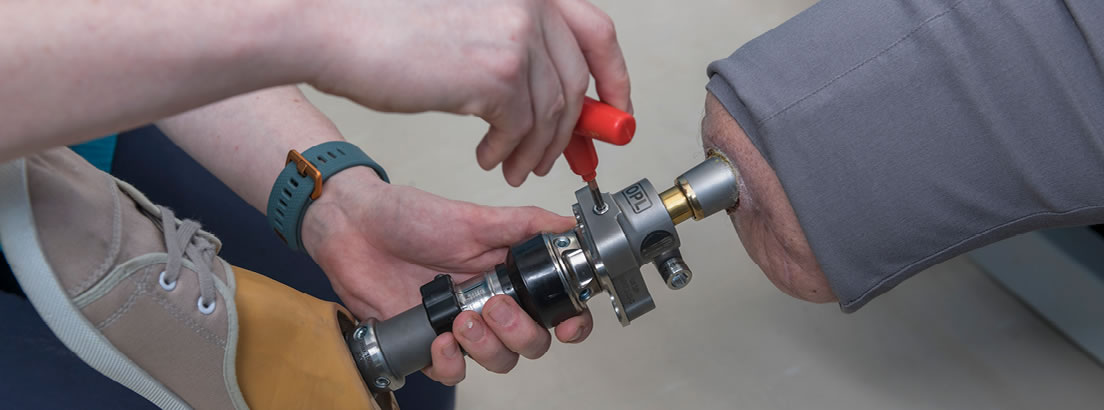Prosthetics

Everyone who must adapt to an assistive device faces emotional and physical challenges along the way – and we’re here to support you on that journey.
Once you are put in contact with our service, we will work with a multidisciplinary team to ensure you receive the best possible outcome.
First steps
During the initial rehabilitation phase, we will provide an interim prosthesis (also known as a ‘first limb’). We will select the most appropriate design with you, from the wide range of technologies available, to meet your immediate needs. This is followed by a casting to take your precise measurements, and then fabrication of your first prosthesis.
Once the interim limb is completed, the fit and alignment are adjusted so you can take your first steps. You will work with the prosthetist, physiotherapist, doctors and other healthcare professionals to help you adapt to your new limb. During this period, your prosthesis is constantly monitored and adjusted to maintain the best fit and help you achieve an efficient way of walking (known as ‘gait’).
Usually this process begins in a rehabilitation centre, however once you are safe and stable on your limb, you can go home and complete your rehabilitation as an outpatient.
Longer term solutions
Once the wound has healed completely, you will progress to what we call a ‘definitive prosthesis’, which will be suitable for your day-to-day activities and may also factor in any special uses such as sports and exercise. Sometimes people will have additional limbs custom built to allow them to continue in or take up specific specialist activities such as cycling or running.
The final bespoke technology solution we use will be a combination of pre-manufactured and hand-made components. Traditionally the base limb will be fitted with a lightweight foam cover that is shaped to match your other leg or arm. Some people prefer to showcase the workings of the technology underneath and will not use a cover.
We can provide limbs with creative designs such as colours and patterns on the outside of the prosthesis, as well as a more natural look. This can be discussed with your prosthetist at the time of fabrication.
Ongoing care
After your prosthesis is fitted, there may be occasions when the device needs adjustment or repair. At regular check-ups, your prosthetist will carry out all the required maintenance, tell you how to care for your own prosthesis, and advise you when a replacement may be needed.
